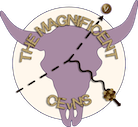Speaker
Description
The Coherent Neutrino Nucleus Interaction Experiment (CONNIE) aims to detect, for the first time, coherent elastic antineutrino-nucleus scattering (CEvNS) in silicon and probe physics beyond the Standard Model. To that end, the experiment has been taking data next to the Angra 2 nuclear power plant since mid-2021 with high-sensitivity detectors known as Skipper-CCDs. These pixelated sensors consist of an array of coupled capacitors and operate through a sequential readout process. Their nondestructive readout capability, which enables multiple measurements of the same charge, has been demonstrated to significantly reduce readout noise to sub-electron levels, making them well suited for detecting low-energy interactions. To improve the background event rejection, we are assessing the use of a convolutional neural network to estimate the depth in the Silicon of single hit events. The training and validation of this network are based on simulated images. This work presents the algorithm used to simulate the signal of such single-hit events in the detector, as well as the current development status of the neural network. This tool is expected to help further reduce background levels in the experiment and support the search for coherent antineutrino-nucleus scattering.
